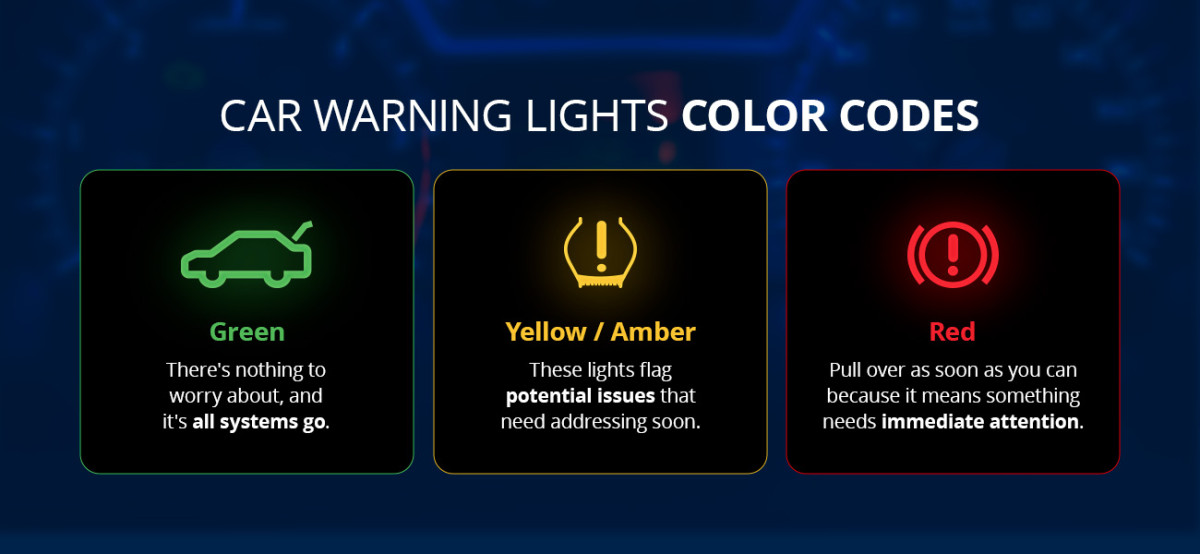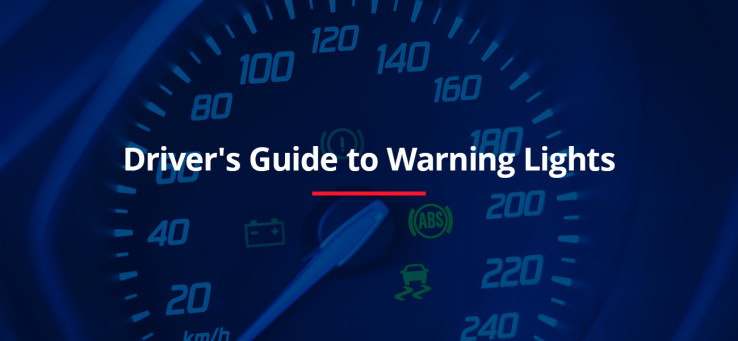Vehicles come with dashboard symbols that usually light up when you turn on the ignition. These lights are also called warning lights. Warning lights can be cryptic, especially since new car models with better and smarter upgrades hit the market almost daily, packed with new features and symbols.
What are the chances that you keep track of every warning light that blinks into existence on your car's dashboard? If you are unfamiliar with some or most of these lights, you may want to start paying attention because they are critical to how your vehicle operates. This driver's guide to warning lights will help you understand these signals and what to do when you see them activated.
What Do Dashboard Warning Lights Mean?
Warning lights may flash briefly when you start your car, but if they stay on or light up suddenly when you're driving, something is wrong with your vehicle. The issue may be small or big, depending on the symbol you see. Since your car dashboard symbols are a built-in communication feature designed to alert you to possible issues, seeing one or more should spur you into action.
What Are the Common Warning Lights?
Your car's on-board diagnostic system monitors its performance and alerts you if it detects an issue that requires your attention. However, you can best respond by identifying your car light symbols and what each means. Here's a rundown of what common dashboard lights mean:
- Check engine light: You've probably noticed a dashboard symbol that looks like a child's drawing of a helicopter with an extra propeller at the front. That's the engine light, and the image is a rough engine symbol. Usually, the warning light comes with the words “CHECK” or “CHECK ENGINE,” which means your vehicle has identified a problem with the engine. However, the warning light doesn't pinpoint the exact issue.
- Traction control light: A dashboard light that looks like a car with two wavy track marks means that your vehicle's traction control system is active. The system helps to prevent your wheels from skidding during acceleration. If the symbol remains on, the system is likely not working as it should.
- Anti-lock braking system (ABS) warning light: The anti-lock braking system is different from your braking system. That means the ABS symbol doesn't indicate any failure to your breaks. The ABS prevents your vehicle's wheels from locking and losing stability when you brake hard during an emergency. If the ABS light is on, it could mean the system is inactive for some reason.
- Low fuel light: The low fuel signal, which resembles a gas pump, lights up when you're running out of fuel. It comes on when the fuel level falls below a specific point, which varies from one vehicle to another.
- Brake pad warning: The brake pad warning light is one of the least straightforward. If you notice a circle with three dots on either side, your brake pads are worn and you need a replacement. While the brake pad warning is not as urgent as some of the rest, you want to address it as soon as possible to ensure your braking system works perfectly.
- Airbag indicator: If your airbag system has an issue, you'll notice a dashboard symbol that looks like a seated person with a deployed airbag. Since the airbag is crucial to your safety in the event of an accident, you want to get your car checked soon.
- Brake system light: An exclamation mark inside a circle means your braking system is not working properly. The issue could be anything, which is why you must stop inspection as soon as possible.
- Distance warning: The distance warning light will glow if your car detects an object ahead of you. If you see this light, you're closer to other road users than you think, and you may want to slow down. Sometimes the light may come on when there's nothing ahead of you. The issue could be dirt on the sensors.
- Tire pressure light: Similar to the brake system light, the tire pressure light shows an exclamation mark inside a bucket. It indicates low tire pressure or an issue with the pressure sensors.
- Coolant level light: If your car is overheating, a thermometer-like symbol with wavy lines below it will appear on your dashboard. You may want to stop and let the engine cool down before checking the cooling system.
- Battery warning light: Your car's battery charges while the engine is running. If the battery outline pops up while driving, it could mean an issue with the charging system. Many factors affect your car's battery life, including external factors like heat. Getting a battery inspection will help you determine if the issue is with the battery or charging system.
Warning Lights You Should Not Ignore

Car warning lights tend to have color codes, which let you know how severe the issue is. If the symbols are in green, there's nothing to worry about, and it's all systems go. Yellow or amber lights flag potential issues that need addressing soon. However, if you see a red light, you should pull over as soon as you can because it means something needs immediate attention. Some of the warning lights you should never ignore include:
- Brake system warning
- Airbag warning
- Transmission light warning
- Check engine warning
- Power steering warning
- Battery warning
What to Do if You See Warning Lights
If a warning light pops up on your dashboard, it’s not a disaster yet. That’s your vehicle communicating that an issue needs attention soon. At the earliest opportunity, assess the situation. How bad the issue is depends on the light you see. The manufacturer's handbook is a great place to start if you're not sure what the warning lights on your vehicle mean.
While some warning lights, such as seatbelts and low fuel reminders, are easy to fix, others may indicate a more complex issue. If you see a brake system warning or transmission light, you may want to take your car to a mechanic.
Get the Assistance You Need With AAA
Your vehicle is a computerized machine equipped with all sorts of lights. Since car light meanings vary depending on their purpose, it’s good to understand each category and how to respond. Dashboard lights provide important alerts about your vehicle’s performance. Learning to identify what the different car dashboard symbols mean can help you avoid emergencies and keep your car running smoothly.
However, car emergencies happen to the best of us. Whether it's a flat tire or sudden overheating, it may leave you on the roadside with few options. That's where the AAA steps in. With a AAA membership, you can enjoy services like emergency roadside assistance, which includes towing, fuel delivery, auto repair, flat tire and more. Learn more about the many benefits of a AAA membership today!


